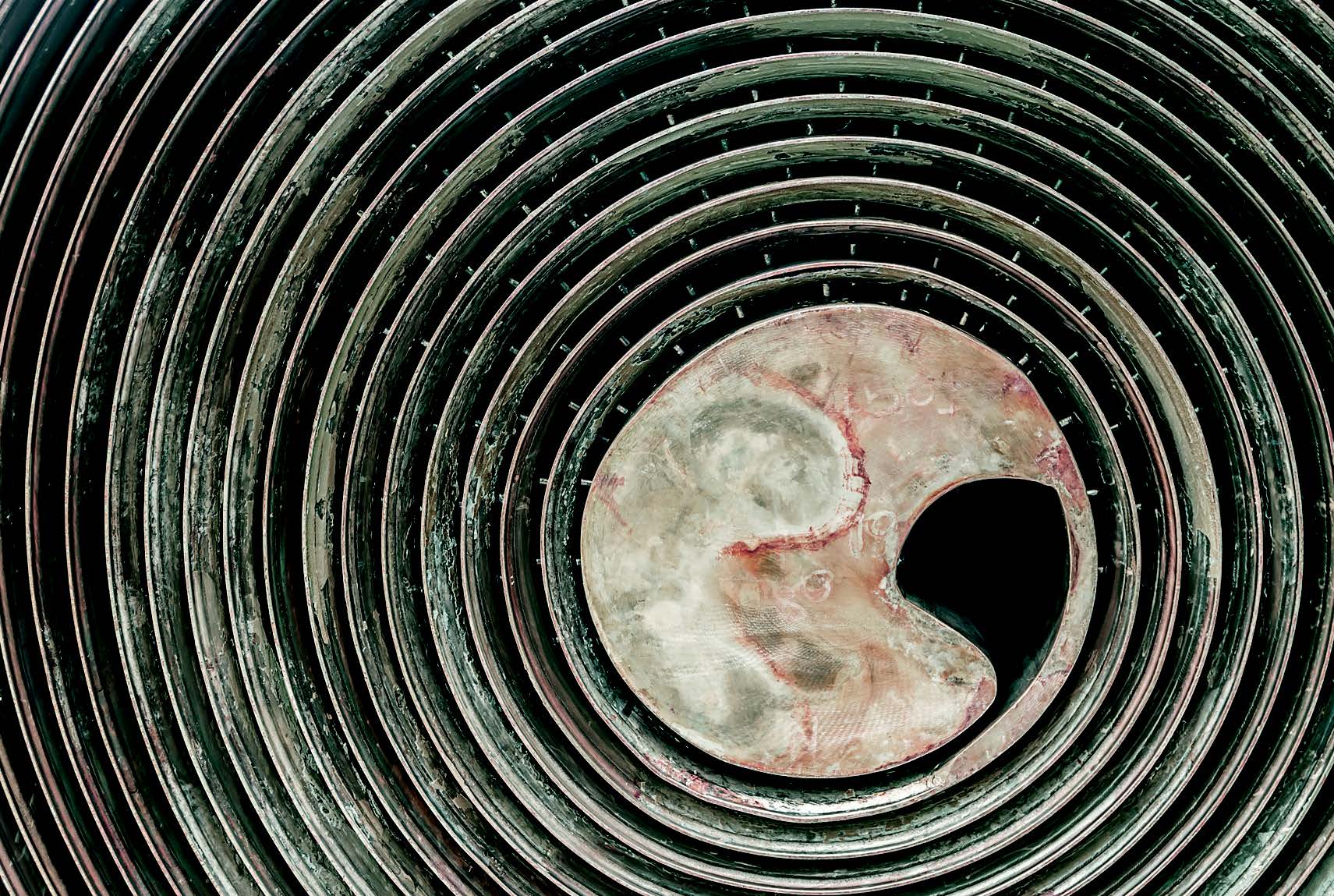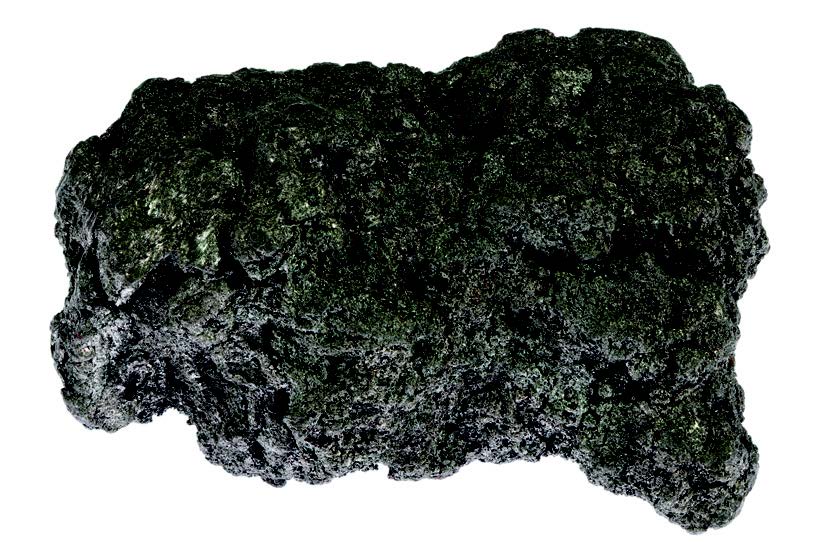Material selection is a critical aspect of designing heat exchangers, especially when it comes to combating corrosion. Corrosion is a common challenge in heat exchangers due to exposure to varying temperatures, pressures, and corrosive substances. The goal of this article is to choose materials that can withstand these harsh conditions, ensuring the longevity, efficiency, and safety of the heat exchanger.
By Omari Hussein Sabuni, Mechanical Engineer – Kinyerezi Power Plant
The following is an in-depth exploration of the approaches involved:
 Understanding corrosion mechanisms: Before selecting materials, it’s essential to understand the corrosion mechanisms that may occur in heat exchangers. Different types of corrosion, such as general corrosion, pitting, crevice corrosion, and stress corrosion cracking, can affect materials differently. Understanding these mechanisms helps in choosing materials with the appropriate resistance.
Understanding corrosion mechanisms: Before selecting materials, it’s essential to understand the corrosion mechanisms that may occur in heat exchangers. Different types of corrosion, such as general corrosion, pitting, crevice corrosion, and stress corrosion cracking, can affect materials differently. Understanding these mechanisms helps in choosing materials with the appropriate resistance.- Corrosion resistant materials: Explore materials known for their corrosion resistance. Stainless steel, nickel alloys, titanium, and certain copper alloys are examples of materials with excellent resistance to corrosion. These materials form passive layers or oxide films that protect against corrosive attack.
- Compatibility with operating conditions: Consider the specific operating conditions of the heat exchanger, including temperature, pressure, and the nature of the fluid or gas being processed. Different materials have varying performance under these conditions, and selecting a material that is compatible with the operating environment is crucial.
- Galvanic compatibility: Avoid galvanic corrosion by selecting materials that are compatible with each other. Galvanic corrosion can occur when dissimilar metals are in contact, leading to accelerated corrosion of one of the metals. Using materials with similar electrochemical properties helps prevent this issue.
- Corrosion testing and evaluation: Conduct thorough corrosion testing to simulate the actual operating conditions. Accelerated corrosion tests, exposure tests, and corrosion modeling can help predict the long-term performance of materials. This approach allows engineers to identify the most suitable material for the specific application.
- Coatings and corrosion inhibitors: Consider the use of coatings or corrosion inhibitors as supplementary measures. Protective coatings can provide an additional barrier against corrosive elements, while corrosion inhibitors can be added to the fluid to mitigate corrosion.
- Life cycle cost analysis: Perform a life cycle cost analysis to evaluate the overall cost-effectiveness of different materials. This analysis includes not only the initial procurement cost but also maintenance, repair, and potential downtime costs. Choosing a material with a favourable life cycle cost is essential for long-term economic viability.
- Regulatory compliance: Ensure that the selected materials comply with industry standards and regulations. This is particularly important in sectors with strict safety and environmental requirements. Compliance with standards helps guarantee the reliability and safety of the heat exchanger.
Selection of materials
The selection of materials for heat exchangers is a critical aspect of engineering design, playing a pivotal role in ensuring the efficiency, longevity, and safety of these essential components. Heat exchangers are integral in various industrial processes, ranging from power generation to chemical manufacturing, and the materials chosen must withstand diverse operating conditions. Let’s delve into some commonly used materials for heat exchangers and their distinctive properties:
Stainless steel
- Advantages: Stainless steel stands out for its exceptional corrosion resistance, making it resilient in both oxidizing and reducing environments. This resistance is crucial in preventing degradation over time, ensuring the longevity of the heat exchanger.
- Applications: Widely employed in water-based applications and food processing industries, stainless steel is a preferred choice where hygiene standards are paramount. Its corrosion resistance makes it suitable for applications where the fluid or gas being processed might have corrosive elements.
Copper and copper alloys
- Advantages: Copper boasts high thermal conductivity, facilitating effi cient heat transfer in heat exchangers. This property is particularly advantageous in applications where optimizing heat exchange is critical for overall system performance.
- Applications: Commonly utilized in HVAC systems, refrigeration units, and certain chemical processes, copper’s ability to quickly and effectively transfer heat makes it a reliable choice in scenarios where temperature control is crucial.
Aluminium
- Advantages: Lightweight and possessing good thermal conductivity, aluminium is an attractive option for heat exchangers. Its weight-to-strength ratio and heat transfer capabilities make it suitable for various applications.
- Applications: Found in automotive heat exchangers, air conditioning systems, and certain industrial processes, aluminium’s properties contribute to the overall efficiency and effectiveness of heat exchange systems.

Titanium
- Advantages: Titanium is renowned for its exceptional corrosion resistance, particularly in aggressive environments. This property makes it an ideal choice for applications where exposure to corrosive substances is a concern.
- Applications: Utilized in industries such as chemical processing and marine applications, titanium’s corrosion resistance is crucial in environments where other materials may deteriorate over time. It is also preferred in applications demanding a high level of corrosion resistance.
Nickel alloys
- Advantages: Nickel alloys, exemplified by materials like Inconel, offer a combination of high strength and corrosion resistance, especially at elevated temperatures. This makes them suitable for demanding conditions.
- Applications: Commonly found in high-temperature and corrosive environments, nickel alloys find applications in sectors like petrochemical and aerospace industries. The ability to withstand harsh conditions makes them integral in ensuring the reliability and safety of heat exchangers in these settings.
Assessing corrosion resistance properties of various alloys
Assessing the corrosion resistance properties of various alloys for heat exchangers involves a comprehensive evaluation of multiple factors to ensure optimal performance and durability in diverse operating conditions. Corrosion, a significant concern in heat exchangers due to their exposure to varying temperatures, pressures, and corrosive substances, can lead to degradation and failure if not adequately addressed. Let’s delve into the detailed assessment of corrosion resistance properties:
1. Localized corrosion resistance:
Localized forms of corrosion, such as pitting and crevice corrosion, pose particular challenges in heat exchangers due to their potential to initiate rapid and localized material deterioration. The assessment of localized corrosion resistance involves:
- Pitting resistance: Evaluate each material’s resistance to pitting corrosion by subjecting samples to conditions conducive to pit formation, such as exposure to chloride-containing environments or fluctuating temperatures.
- Crevice corrosion resistance: Assess the susceptibility of materials to crevice corrosion, which occurs in confined spaces or crevices where stagnant electrolyte solutions can form. Evaluate how each material mitigates crevice corrosion under conditions mimicking those encountered in heat exchangers.
- Testing methods: Various testing methods, including electrochemical techniques like potentiodynamic polarization and immersion tests, can be employed to assess localized corrosion resistance by quantifying parameters such as pitting potential and crevice corrosion susceptibility.
2. Temperature and chemical compatibility:
The corrosion resistance of materials must be evaluated under the specific temperature and chemical conditions they will encounter during operation in heat exchangers. This assessment involves:
- Temperature effects: Consider the impact of elevated temperatures on the corrosion resistance of materials, as some alloys may exhibit reduced resistance or accelerated corrosion under high-temperature conditions.
- Chemical exposure: Evaluate the corrosion resistance of materials in the presence of chemicals commonly encountered in heat exchanger applications, such as acids, alkalis, and corrosive gases. Determine the compatibility of each material with the specifi c chemicals present in the operating environment.
- Long-term exposure: Assess the long-term effects of temperature and chemical exposure on material degradation by subjecting samples to accelerated aging tests or prolonged exposure tests under conditions representative of heat exchanger operation.
3. Galvanic compatibility:
Galvanic corrosion can occur when dissimilar metals are in contact in the presence of an electrolyte, leading to accelerated corrosion of one of the metals. To prevent galvanic corrosion effects in heat exchangers, consider:
- Galvanic series: Conduct the galvanic series to determine the galvanic compatibility between dissimilar metals commonly used in heat exchanger construction. Select materials with similar electrochemical potentials to minimize the risk of galvanic corrosion.
- Isolation techniques: Implement isolation techniques such as coatings, insulating materials, or dielectric spacers to electrically isolate dissimilar metals and prevent galvanic coupling, thereby reducing the likelihood of galvanic corrosion.
4. Corrosion testing:
Conducting corrosion testing is essential to simulate real-world conditions and predict the long-term performance of materials in heat exchangers. This includes:
- Exposure tests: Subject materials to prolonged exposure to corrosive environments representative of heat exchanger operating conditions to evaluate their corrosion resistance over time.
- Accelerated corrosion tests: Employ accelerated corrosion testing methods, such as salt spray tests or cyclic corrosion tests, to simulate aggressive environmental conditions and assess the susceptibility of materials to accelerated corrosion under accelerated aging conditions.
- Evaluation criteria: Establish evaluation criteria based on industry standards, regulatory requirements, and the specific performance expectations of the heat exchanger to determine the suitability of materials based on corrosion testing results.
Guidelines for optimal material selection based on application

Selecting the optimal material for a heat exchanger is a multifaceted process that requires a thorough understanding of the specific application and operating conditions. To achieve this, engineers follow a set of guidelines to ensure that the chosen material aligns with the functional, economic, and regulatory requirements of the heat exchanger system. Here are detailed explanations of the key guidelines for optimal material selection based on application:
1. Operating conditions:
Understand the temperature, pressure, and chemical environment the heat exchanger will be exposed to:
- Temperature: Consider the temperature range the heat exchanger will experience during operation. Different materials have varying temperature limits, and selecting a material that can withstand the anticipated temperature extremes is crucial.
- Pressure: Evaluate the pressure levels the heat exchanger will be subjected to. The material must have sufficient mechanical strength to withstand the internal pressures without failure.
- Chemical environment: Analyze the nature of the fl uid or gas being processed and ensure that the material is corrosion-resistant to the chemicals present in the operating environment.
2. Material properties:
Consider thermal conductivity, mechanical strength, and corrosion resistance properties of materials:
- Thermal conductivity: Evaluate the thermal conductivity of materials to ensure efficient heat transfer. Materials with high thermal conductivity are often preferred for applications where maximizing heat exchange efficiency is critical.
- Mechanical strength: Assess the mechanical strength of materials to withstand the structural loads and pressures experienced during operation. The material should not deform or fail under these conditions.
Corrosion resistance: Consider the corrosion resistance properties of materials, taking into account the potential corrosive elements in the operating environment. Opt for materials that exhibit adequate resistance to corrosion to prolong the life of the heat exchanger.
3. Cost Considerations:
Evaluate the overall cost of the material, including initial procurement, maintenance, and potential downtime costs:
- Initial procurement cost: Consider the upfront cost of acquiring the material. While higher-quality materials may have a higher initial cost, they may prove more cost-effective in the long run due to reduced maintenance and replacement expenses.
- Maintenance costs: Anticipate maintenance requirements and associated costs. Materials that require less frequent maintenance or are easier to repair may result in lower overall operational expenses.
- Downtime costs: Factor in potential downtime costs related to material failures. Opt for materials with a track record of reliability to minimize the risk of unplanned downtime.
4. Life cycle analysis:
Conduct a life cycle analysis to assess the long-term performance and cost-effectiveness of different materials:
- Long-term performance: Evaluate the expected lifespan of the heat exchanger when constructed with different materials. Consider how each material’s performance may change over time and under various operating conditions.
- Cost-effectiveness: Assess the overall cost-effectiveness of each material over its entire life cycle, incorporating factors such as initial costs, maintenance expenses, and potential savings due to increased efficiency or longevity.
5. Regulatory compliance:
Ensure that the selected materials comply with relevant industry standards and regulations:
- Safety standards: Verify that the chosen material meets safety standards applicable to the industry. Compliance with standards ensures the heat exchanger’s safe operation and minimizes the risk of accidents.
- Environmental regulations: Consider environmental regulations, especially in industries with stringent environmental requirements. Materials should not pose risks to the environment or human health.
6. Maintenance requirements:
Consider the ease of maintenance and repair, as well as the availability of spare parts for the selected material:
- Ease of maintenance: Opt for materials that are easy to maintain, repair, and replace if necessary. Materials requiring less intricate maintenance procedures can contribute to overall system reliability.
- Spare parts availability: Ensure that spare parts for the selected material are readily available. This consideration is crucial for minimizing downtime in case of unexpected failures.
Conclusion
In the realm of heat exchanger design, material selection stands as the linchpin for ensuring longevity, efficiency, and safety. The approaches discussed provide a nuanced guide, delving into corrosion mechanisms, diverse materials, and critical assessments. This journey reveals that the resilience against corrosion isn’t just a choice; it’s a strategic blend of science, engineering acumen, and a commitment to industrial process efficiency.
About the author

Omari Hussein Sabuni is an experienced mechanical engineer at Kinyerezi Gas Power Plant, specializing in heat exchanger design, optimization, troubleshooting and providing practical solutions for various heat exchanger problems. He is skilled in analyzing thermal systems and developing innovative solutions to enhance heat transfer efficiency and adept at conducting feasibility studies, performing risk assessments, and ensuring compliance with industry standards.
About this Technical Story
This Technical Story was first published in Heat Exchanger World Magazine in June 2024. To read more Technical Stories and many other articles, subscribe to our print magazine.
Technical Stories are regularly shared with our Heat Exchanger World community. Join us and share your own Technical Story on Heat Exchanger World online and in print.

